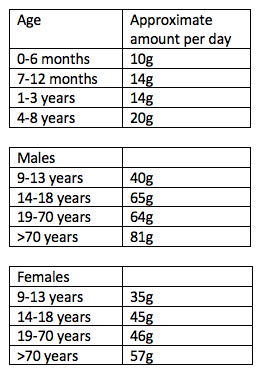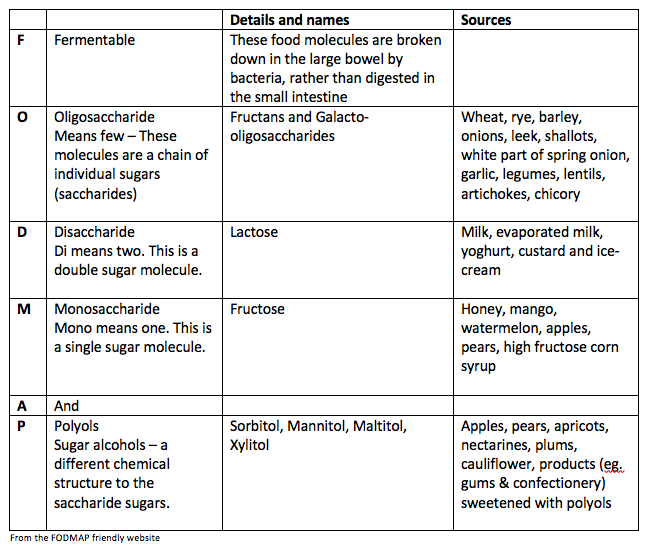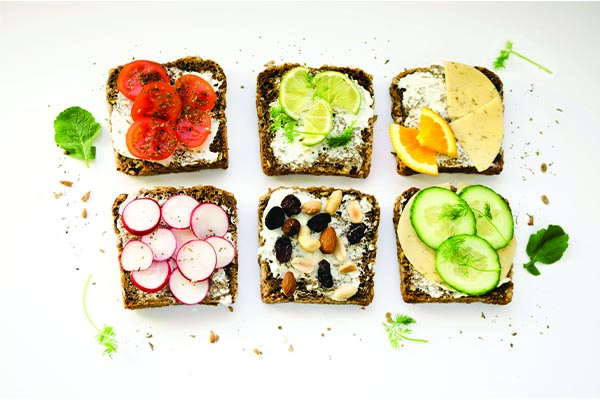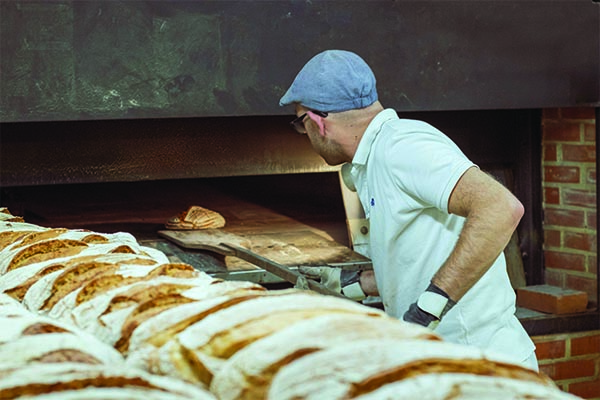
Is the Lower Carb Bread suitable for a keto diet? A healthy ketogenic diet is a very prescriptive diet. The rules dietary rules include consuming about 75% fat, 10-30% protein, and no more than 5-10% (20 to 50 grams) of carbs per day. The focus is on high-fat (healthy fats preferably), low-carb foods like eggs, meats, dairy, nuts/seeds, and low-carb vegetables, as well as sugar-free beverages which include coffee and tea as long as sugar is not added.
Many people engage in a keto diet for weight loss. Weight loss on the keto-diet can happen quite quickly, however, the dietary change can have negative emotional, physical, and behavioural effects short term. Due to the drastic reduction in carbohydrate intake, many individuals begin to feel fatigued, emotional, may have headaches, and notice a change in bowel movements, leaving the stomach feeling a little uncomfortable. After a couple of weeks, the body will enter ketosis and the symptoms of this include increased thirst, dry mouth, frequent urination, and decreased appetite. It is important to understand the journey to ketosis before you begin the process.
Bread is a carbohydrate-based food. Most bread contains approximately 25g of carbohydrate for 2 slices. This amount would certainly not compliment a keto diet. Many foods we consume that are not carbohydrate-based foods, still contain trace amounts of carbohydrates that add up over the day. This includes fruit and non-starchy vegetables which can be included in a keto diet and are important for good health.

Alpines Lower carb bread can be included in a keto diet, however, food consumed the rest of the day would need to be calculated carefully. Having 1 slice of Alpines Lower carb bread would certainly work in this style of diet. This bread has so many nutritionally dense ingredients that are important for overall health. For individuals following a keto-friendly style diet, Alpines Lower carb bread is very suitable. A keto-friendly diet permits 50-150g carbohydrate per day (10-30% of intake). Alpines Lower carb bread contains 7.2g carbohydrate for 2 slices. Therefore, these amounts would have no impact when looking to consume 50-150g carbohydrate per day.
If you are considering trying a keto diet it is important to plan before you begin. This would include purchasing the products you need and even prepping some meals. Many of the foods eliminated, may be difficult to abstain from in meals when socialising or going out. Grab and go food from places outside the home are often difficult to find. Although a keto diet may help someone achieve weight loss relatively quickly, it is important to know that maintaining a ketogenic lifestyle can be time-consuming and require good management
In a world where convenience is much sought after, it is often forgotten about the reality of life. Food has been converted into convenient packaging for grab and go, you can have meals delivered to your door, you can pick something off a shelf just add water and voila! Some of these concepts are brilliant and ensure people are receiving nutrition from convenience. However, the concern is, is that we often overlook good nutrition for convenience.
Take for example protein. If you are a carnivore you would receive your protein from beef, lamb, chicken, turkey, and fish. If you are a pescatarian you would still receive protein from fish. If you are a vegetarian you receive protein from eggs and dairy and if you are a vegan you can receive protein from legumes, nuts, seeds, and grains. This abundant nutrient is in a wide array of our foods. Being important for growth, development, and cellular repair there are enough options to make sure you meet your protein needs (see blog…).
In our modern world, protein has found itself on the shelves in a different format. As a powder, this convenient product, often used for those exercising, has meant that achieving protein requirements post-exercise is highly convenient. A protein shake where you can just add water or milk means no preparation and the convenience of having it with you as you walk out of the gym.
The concern with convenience is three-fold:
Firstly, a protein supplement is just that, just protein. If you consume protein food it not only contains the protein but also has other nutrients that would be beneficial to the body and may aid the protein during digestion or even for its utilization in the body.
For example, a protein shake will provide only protein, while flavoured milk or smoothie will provide protein, carbohydrate, fiber, and vitamins and minerals.
Second, protein supplements can contain many other chemicals and fillers to help support shelf-life, flavor, and what people believe aid recovery, as in extra amino acids or sports like supplements. Food can be as clean and simple as what you see. For example, a protein shake can provide protein, BCAAs, emulsifiers, flavourings, sweeteners while a can of tuna contains just tuna.

Last, protein supplements will yes help support recovery but will also fill you up reducing the amount of actual food you may consume in the day. As stated earlier actual food has a variety of other nutrients beneficial for health as well as cellular repair and recovery.
Alongside all these things mentioned above is that when we chew our food we actually are more satisfied with what we consume and therefore are able to control the amount of food we have throughout the day. Having control over appetite is a great way to ensure the body receives exactly what it needs when it needs it. Therefore, having a good complete nutritious snack that contains protein post-training will ensure you can control your appetite until your next meal or snack.
The amount of protein required post-exercise does not have to be a meal size. The amount can be found in snack-sized foods, it just means you need to have the snack with you so you can eat it straight away. Have a chicken sandwich on Alpine Breads High Protein Bread and you can easily hit the right amount of protein for recovery.
So what is protein? We hear about this amazing nutrient that definitely needs to be a part of our daily intake, and has gained much attention over the last decade, but do we really understand what it is doing.
Let’s take a deep dive into the protein world to work out just how much you need.
Protein is the building blocks of our cells. These protein molecules are made from amino acids (much smaller molecules that bind together to form proteins). With 20 amino acids in our foods, you can only imagine the potential combinations of proteins that can form, and yes that’s why all our cells, from our muscles, bones, cartilage, skin, and blood as well as hormones are so different. The body of a 76kg man contains about 12kg of protein. Nearly half of this protein is present as skeletal muscle, while other structural tissues such as blood and skin contain about 15%.
Due to the fact that protein plays a role in developing and repairing these cells, you can understand that our need for protein changes throughout our life cycle. As we grow through childhood and adolescent protein is needed for the body to grow and at the other end of the spectrum as we age protein is necessary for repair cells that may be damaged. So there is not one number you need throughout life. Also, layer this with how active you are and what your physical goals would be. That changes it all over again.


For pregnancy during the 2nd and 3rd trimesters protein requirements increase to around 60g per day. As explained earlier when cellular development and growth is occurring more protein is required, which is what happens when a fetus is growing during pregnancy. If a mother chooses to breastfeed then her protein intake will increase again to approximately 67g per day as her needs to produce milk for the baby increase.
These numbers are baselines numbers and don’t take into account an individuals needs with respect to their activity level.
If you are doing exercise to gain muscle size then your protein requirements will increase as well as other nutrients that contain calories such as carbohydrate and fat, while if you are looking to gain muscle strength you will be increasing your protein.
However, there is more to protein than just how much of it you eat. While the total amount of protein you eat over a day is important, the body can only use a relatively small amount of protein at any one time. This means that the timing and spread of this protein can be more important to muscle growth. Therefore, looking for foods that are high in protein as a great recovery food is ideal.
Food intolerances seem to be a growing modern situation. Why they seem to be growing in numbers is not fully understood. Without understanding how they have evolved, the understanding that food science can be used to minimise the adverse reaction has been assessed and achieved. There are so many different intolerances and being able to work out which intolerance affects you is a process, but once this has been confirmed it is now much easier to navigate foods that should be avoided versus foods that should be consumed in smaller volumes versus those that can be consumed freely.
Many food companies have been able to jump on the band wagon of manufacturing foods to support the growing food intolerances. From dairy companies to pasta as well as beverage producers.
Bread has a been a household staple for centuries. There is a unique process in making bread, which has changed over time due to the demand for volume and quick turn around time in production. The issue is, is that some individuals with intolerances have not been able to consume bread due to some of the ingredients. Many bread companies have been producing gluten free bread for those with gluten sensitivities or for those that are coeliac. With respect to Coeliac or gluten intolerances, bread made with wheat, spelt, barley, rye or oats contains the protein gluten. Therefore, bread could no longer be made with these grains when trying to achieve a gluten free bread.
Another intolerance more common now is to certain foods that fall under the FODMAP banner. It is estimated that 35% of Australians have an intolerance to one or more FODMAP foods. Bread made with the grains wheat (including spelt), rye and barley for example will contain oligosaccharides, one of the FODMAP molecules. Therefore, depending on the type of bread, the portions need to be controlled to ensure no adverse reactions occur for those requiring a low FODMAP diet.
Alpine Breads FODMAP friendly bread does contain these grains and therefore would ordinarily be a bread that an individual would need to be cautious about. However, this bread has been made in a traditional sense which reduces the FODMAPs within the bread. There are two main reasons as to why this bread is considered and tested as a FODMAP friendly bread.
Firstly, the breads are made like traditional sourdough breads. The process of making sourdough enables the oligosaccharides to be broken down. Sourdough bread is fermented. The wild yeast and bacteria in sourdough breakdown some of the carbohydrate and protein, while the bread is fermenting. Conversely, when bread is made with fast rising yeast, the bacteria don’t have time to pre-digest these molecules. Therefore, the old school slow ferment actually reduces the FODMAPs on the end product, making the FODMAP count reduced. So those requiring low FODMAP foods can generally consume these breads.
Furthermore, the addition of amylase into the bread ensures the starches from the grains are broken down into sugars. This sugar feeds the yeast which is a part of the fermentation process. Therefore, the more sugar fed to the yeast, the starches in the flours, the less oligosaccharides and monosaccharides in the bread when baking is complete.
Keeping the traditional idea of fermentation to create a sourdough is essential for a low FODMAP product. Having this bread on shelf means that individuals engaging in a low FODMAP diet to assess their intolerance or for those that know they are intolerant to certain FODMAP foods, gives them another option. Bread is not a food that needs to be eliminated.
Artisan refers to a skilled trade especially one that uses hands to produce a product. Artisan bread refer to the style of short shelf-life bread that is a craft unto itself, compared to large production manufacturing of bread.
The first-known leavened bread, or rising bread, was apparently made around 1000BC in Egypt. Australian historians believe that Aboriginal Australians were well ahead of other civilisations, including the Egyptians, in bread making. This has been accounted for due to discovering grindstones that are 36,000 years old. Nevertheless, before industrialization bread making by all of civilization was made by hand even including the grinding of grains and seeds. All of these breads are considered Artisan breads due to sharing the same characteristics, no matter the grains or seeds used.
- Today many Artisan loaves are produced. The characteristics of these breads include:
- less ingredients than a commercial loaf; these breads do not include preservatives and little or no use of dough conditioners
- pre-ferments, otherwise known as the starter that helps the bread rise, without using a fast-rising yeast
- longer fermentation times, this can be even up to 72 hours
- made by hand using traditional techniques
Therefore, the masters of this craft only require flour, water, wild yeast, salt and the most important element being time.
Artisan bread is baked in a hearth-style oven, where radiant heat is the main source, and ovens designed to inject steam into the baking chamber.
The difference between these breads and industrially produced loaves that have an ease of repeatability and are standardized, is that their texture and shape can vary and the shelf life is not as long due to the lack of added chemicals to create a longer shelf life.
Although the convenience of commercially large scale loaves is a reason to purchase, the nutritional benefits of Artisan loaves is certainly a major factor that needs to be considered when purchasing your next loaf. Next time you choose your bread consider your fundamental needs and hopefully, your health will be number one.
FODMAPs are a collection of molecules found in food. The basis of these molecules is short-chain carbohydrates and sugar alcohols. These molecules are found in food naturally or are used as food additives. They are not necessarily labeled, especially if they are naturally found in food. The reason FODMAP has become known is due to the effect these molecules have on the bowel.
Many individuals who have digestive malaise have found that some dietary changes have improved their symptoms. For individuals with Irritable Bowel Syndrome (IBS) with symptoms such as abdominal pain bloating and distension, excessive wind and gas, nausea or changes in bowel habits (diarrhea and/or constipation), a diet with low FODMAP intake has been proven to help.
FODMAP stands for:

When we consume foods or drinks that contain FODMAPs they may be poorly absorbed in the small intestine. It is important to remember that not all FODMAPs will trigger a response. If a FODMAP or a couple of FODMAP foods are not digested and absorbed as they should be, then they pass into the large intestine. In the large intestine, these molecules are fermented by the bacteria living in the large bowel. The by-product of this fermentation is the production of gas. Therefore, individuals may feel bloated and distended and produce more gas than usual. Also, FODMAPs attract water in the large bowel. If this occurs then the amount of water will change the speed at which the bowel moves, leading to diarrhea.
For individuals who do have the symptoms mentioned above a diet low in FODMAPs has scientifically been proven to be effective in reducing and possibly alleviating the symptoms.
Individuals who suspect they have IBS or have any of the symptoms mentioned above should first speak with their doctor before eliminating any foods. If IBS is confirmed a Dietitian can guide an individual through the implementation of a low FODMAP diet. A low FODMAP diet is often implemented into stages. This allows the individual to firstly restrict foods that are high FODMAP. After following this plan, a Dietitian will re-introduce foods that are low FODMAP with respect to timing and amount over a day. This process needs to be carefully controlled to ensure the correct foods are managed when re-introduced.
A low FODMAP diet may not and is often not be a diet for life, and therefore it is important to seek appropriate advice so restriction that is unnecessary is not long term.
That smell of freshly baked bread is a sensation that transports us back in time to childhood. And although that smell is synonymous with comfort, warmth and relaxation, the smell can actually vary between breads. Many people may not be able to distinguish the difference in smell, but you would certainly be able to describe the difference in taste.
What we are talking about is an Artisan loaf and the fine detail and depth of flavour that comes with the product. This depth of flavor is due to the process involved in making the bread.
Regular commercial bread is made using flour, fast acting yeast, and possibly sugar to start. The yeast feeds on the sugar and produces carbon dioxide which helps give the dough volume. Other than these ingredients, in order for the bread to last on the shelf, they require preservatives and additives. In comparison, a true Artisan loaf uses a yeast culture that is not fast acting. This yeast creates a ferment. When the dough is left exposed to a clean and cool temperature, a fertile environment is created for lactic acid bacteria to form. These microflora consume little energy and multiply slowly, thus the need for time. This fermentation process accounts for the distinctive taste.
From a health perspective, these breads do not contain preservatives or additives. Therefore, as it stands this style of bread is healthy due to containing minimal ingredients and no chemicals.
Another added bonus of the Artisan bread is the slow fermentation process. The microflora and wild yeast also changes the structure of the nutrients in the grains. This combination moves into the flour and water and ferment it. During fermentation, these organisms digest the starches and produce lactic acid and carbon dioxide. While they digest the starches they also degrade some of the proteins. The protein being degraded is gluten. Therefore, for those looking to have lower gluten intake would respond well to this type of bread.
Anecdotally, in some studies individuals have observed less symptoms associated with a long fermented bread (>12 hours) compared to their regular bread consumption. Scientific studies have not indicated it being easier to digest the gluten, however the longer the ferment the more the inflammatory properties such as gluten have been degraded.
Ever since ingredients were modified and manipulated in factories, from their original form, to produce foods for on-shelf “ease of consumption” we began tackling weight-related issues. Worldwide obesity has tripled since 1975. This epidemic has a flow-on negative effect to other health-related issues.
The jury is still out as to whether this coincided with a change in lifestyle. Around this time there was the introduction of household technology as well as major changes in general technology, to ease people’s lives and make things occur faster, so less incidental movement became a by-product. Do we blame that we have inevitably become lazier when remote controls, Bluetooth technology and online servicing were introduced or is that we have made changes in the food chain and ingredient structures that have had a negative chemical reaction on the human body, as foods have been stripped of their nutritional qualities to create fast-moving, edible, tasty food, pumped with chemicals, flavouring and calorie-dense ingredients?

With these above changes and people feeling the need to be proactive in managing weight, dieting, or the concept of a diet became very popular in the 1970s. Many diets were thrown around including the idea of the low carbohydrate diet. The premise behind this concept was that eating too many carbohydrates, especially sugar, white flour and refined carbohydrates – leads to sugar imbalances, weight gain, and cardiovascular issues. When individuals reduce carbohydrates they do lose weight. However, with the ever-increasing mass production of more and more refined products, foods with hidden ingredients, and the increase in convenience foods, maintaining this low carbohydrate diet has become difficult to adhere to long term.
Whichever way you look at it, things need to change! Our mindset needs to change! We need to shop better, choose better, and find ways to be active without cutting corners. The obesity epidemic is not a farce, it is real and if you understand the repercussions of carrying excess weight, then you understand the implications not just on the health care system but also on each and every individual’s quality of life.
A low carbohydrate diet is not for everyone, however reducing or even cutting out certain carbohydrates is something everyone needs to be aware of and work towards. These types of carbohydrates are the foods made from sugar or are high in sugar, which includes lollies, soft drink and sports drink, fruit juice, many sauces and spreads, snack bars, breakfast cereals to name a few. They may also include refined carbohydrates such as white flour, white bread, crackers, pastries, cakes, and many more. By just reducing or removing these foods most individuals will already see a change in not only their weight, but how they feel without completely reducing their total carbohydrate intake.

By still consuming wholegrain foods including oats, brown rice, quinoa and other grains as well as wholemeal flour, wholegrain bread, whole grain pasta and whole fruit, you will still be receiving carbohydrates, but also other very important nutrients that have not been stripped away when the initial ingredient was sent to a factory to be refined. These other nutrients such as bran, fiber and some vitamins and minerals are very important for a well-balanced diet.
Once the refined carbohydrates have been reduced or even removed many other options exist to further lower carbohydrates if an individual so desires to. Just remember managing your carbohydrate intake is about balancing your carbohydrates with your activity level. Be mindful no to cut too much out and risk missing some vital nutrients for your health and well-being.
Carbohydrates refers to one of the three macronutrients that exist in our food. The other two are protein and fat. They are called macronutrients as we need them in large volumes. These three macronutrients have a role but also provide calories, or energy, to the cells in our body. The main purpose of carbohydrate in the diet is to provide energy, as used like petrol in a car. Most carbohydrates get broken down into glucose, which is the molecule the body uses with ease to convert to energy.
Dietary carbohydrates can be split into three main categories:
- Sugars: The sweet, short-chain carbohydrates found in foods. The foods that contain these are table sugar, lollies, fruit, dairy products and refined products like syrups.
- Starches: Long chains of glucose molecules, which eventually get broken down into glucose in the digestive system. These food sources include wholegrains and their products, beans and some vegetables.
- Fibre: Humans cannot digest fibre. The fibre is used by the microbiome (bacteria in the large intestine) in the digestive system. Food high in fibre include the wholegrain, nuts and seeds, fruit, vegetables and legumes.
The Australian Dietary Guidelines suggest that we receive about half of our calories from carbohydrates. Some individuals claim that carbohydrates cause obesity and Type 2 diabetes, and that most people should be avoiding them. There are slanted arguments on both sides, and it appears that carbohydrate requirements depend largely on the individual. Due to the fact that carbohydrates are used as petrol in the body, the amount of carbohydrate an individual consumes would be dependent on how much fuel they need. Therefore, a very active person would require more carbohydrate than a sedentary person. If an individual consumes an excess of carbohydrate over time, the risk may be weight gain due to consuming too many calories and not expending enough, and the ripple effect of weight gain can be Type 2 diabetes.

Foods that are known as carbohydrate foods are those where the higher percentage of the macronutrients is carbohydrate. To give you an idea, below is a list of foods and the approximate percentage of carbohydrate in that food:
Pasta 25%
Rice 23%
White bread 42%
Multigrain bread 28%
Potato, boiled 20%
Banana 23%
Although these foods are considered carbohydrate foods it is possible to find variations of these that would be lower in carbohydrate. Alpine Breads Lower Carbohydrate Bread has 11.1% carbohydrate. This is a large reduction in carbohydrate content compared to white bread.
The reason Alpine Breads Lower Carb bread is so low in carbohydrate is because the bulk of the bread is made from protein, soy, seeds and fibre.
The first ingredient listed is wheat protein. Wheat protein is the protein component from the wheat grain. This ingredient is essential for bread making as it creates an elastic texture which enables the dough to have a high level of strength. In the case of Alpine Breads this is used as the flour base, without using the whole grain which would otherwise increase the carbohydrate content.

The next three ingredients being soy grits, linseeds and sunflower seeds are high in protein and fats respectively. These are all maintained in the whole shape which provides texture in the bread.
The next major ingredient which plays a role in the dough is the wheat fibre. This is from the outmost layer of the wheat grain which is the bran. This is a high fibre product which helps contribute to the high fibre content of the bread.
Therefore, by not using the whole grain, but rather the protein and fibre component of the wheat grain, the bread has been able to easily reduce the total carbohydrate content.
So, although bread is naturally perceived as a high carbohydrate food, Alpine Breads has been able to modify the bread making process by changing up ingredients to alter the nutritional profile at the end. For those who are wanting to reduce their carbohydrate intake, but fear that lifestyle changes like removing bread totally from their diet will be detrimental, will find that having this option will enable a lower carbohydrate to be maintained.
